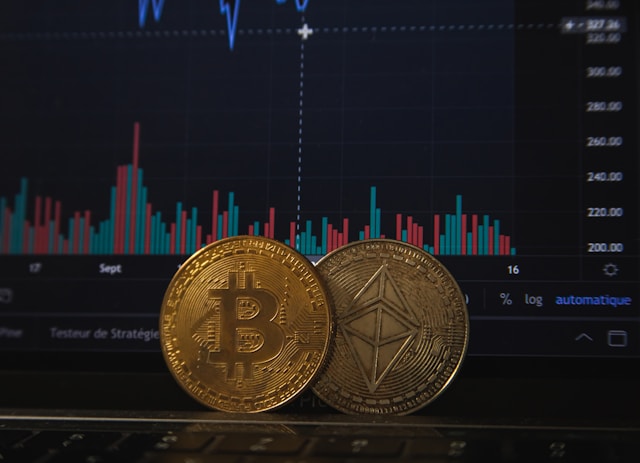SEC outlines fresh crypto regulations while easing Wall Street oversight

A New Regulatory Chapter for Crypto
The U.S. Securities and Exchange Commission (SEC) has signaled a major shift in its approach to digital assets, proposing a series of rule changes aimed at clarifying crypto regulation and easing the compliance burdens long felt by Wall Street and financial intermediaries. What emerges is an agenda that seeks to bridge the divide between innovation and oversight — recognizing crypto’s growing convergence with traditional markets, while trying to protect investors and preserve market stability.
What the Proposed Crypto Rules Would Do
At the heart of the SEC’s proposals are clearer definitions, exemptions, safe harbors, and updated broker-dealer guidelines. The Commission is exploring what it takes for a token or coin to be treated like a security, and under what circumstances that should apply or be exempted. Proposals include allowing certain digital assets to be offered or sold under exemptions or safe-harbors, giving issuers clearer pathways to compliance. Reuters+2AInvest+2

Another key strand is the potential for crypto to be traded on national securities exchanges and alternative trading systems, rather than being segregated into a less formal or less well-regulated corner. That would integrate digital assets more tightly with existing securities infrastructure. Reuters+2Reuters+2
Also included are reforms to disclosure requirements. The SEC aims to rationalize (i.e. simplify or make more coherent) disclosures so that companies dealing with crypto don’t face criss-crossing rules or unnecessary burdens. Part of this is reducing the compliance burdens for public companies, especially around shareholder proposals and other operational obligations. Reuters+2AInvest+2
Scaling Back Oversight in Some Areas
While stronger regulation is proposed in some areas, the SEC is also moving to ease rules or unwind certain strictures introduced under prior administrations. One example is reconsidering or scrapping the “custody” rules and asset classification structures that had imposed higher standards or stricter requirements in how crypto assets are held or reported. Reuters+1
Another example is the reversal of accounting guidance that had treated customer crypto assets held by banks in a particularly onerous way, making banks less willing to offer crypto custody or related services. That reversal is intended to reduce regulatory friction for traditional financial institutions entering or expanding in the digital asset space. Axios+2AInvest+2
Motivations Behind the Shift
Part of the push comes from the industry’s long-standing demand for certainty. Under prior leadership, the regulatory environment was often described as opaque, occasionally unpredictable, with enforcement actions proceeding in the absence of clear guidance. Companies wanted rules spelled out in advance, rather than battling in court or proceeding at risk. Reuters+1
Political change also plays a role. Leadership in the SEC has shifted, and with it a different regulatory philosophy—one more welcoming of innovation, more accommodating of market development, though still professing a concern for investor protection. The current agenda reflects priorities like capital formation, technological innovation, and aligning regulatory requirements with the realities of fast-evolving markets. Reuters+2Reuters+2
Challenges and Risks to Be Addressed
Even as the proposals unfold, there are a number of risks and open questions. Determining precisely which digital assets should be securities remains contentious; too broad a definition risks stifling innovation, too narrow a definition could allow scams and abuses to flourish.
Ensuring that investor protection keeps pace also matters. Simplifying disclosure and easing requirements are helpful, but only if backstopped by effective enforcement, transparency, and accountability. There’s a tightrope between facilitating growth and avoiding fraud, market manipulation, or systemic risk.
Cross-jurisdictional consistency is another issue. Crypto markets are global, and many actors operate across borders. If U.S. regulation diverges sharply from regulation in other major jurisdictions, that could create arbitrage, regulatory gaps, or conflict.
Finally, timing, implementation costs, and industry readiness are practical constraints. Even when rules are finally promulgated, firms need time to adjust, systems to adapt, and clarity to emerge. Legal challenges may slow or alter what the SEC ultimately enacts.
Potential Impacts on Markets and Participants
If the agenda proceeds largely as proposed, the crypto industry may gain much greater clarity and legitimacy. Token issuers might find it easier to raise funds; exchanges may face less legal risk in listing or trading digital assets; banks and other Wall Street institutions may expand services related to custody, trading, or tokenization.
Traditional financial markets might increasingly absorb or incorporate crypto instruments—tokenized securities, stablecoins, or crypto derivatives could gain traction under revised frameworks. That could lead to more capital flow into digital assets, more institutional participation, greater liquidity.
For investors, the promise is more transparency, lower legal risk, and possibly better ability to trust that regulation is consistent and meaningful. But investors will likely also demand that protections stay strong, that disclosures are meaningful, and that oversight doesn’t become merely symbolic.
Looking Ahead
The SEC’s rulemaking agenda is not yet final. Many proposals still require drafting, public comment, revision, and in some cases coordination with Congress or other regulators. Some parts may be delayed or watered down, others may face opposition from various stakeholders.
Monitoring how these proposed rules align with legislative steps is important. There are bills and acts under consideration (or passed) that relate to stablecoins, digital asset regulation more broadly, disclosure law, and accounting standards, which may affect or constrain what the SEC can or cannot do.
In short, the regulatory landscape is changing, and fast. The coming months will likely be decisive in how crypto is integrated—more fully or cautiously—into the U.S. financial system. Stakeholders should watch closely, weigh the trade-offs, and be prepared both for opportunity and for regulatory friction.